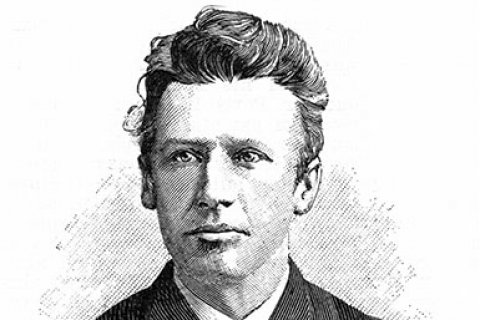Jacobus Henricus van 't Hoff

Jacobus Henricus van ’t Hoff In September 1873 Henry van 't Hoff enrolled at Utrecht University: he graduated in December of that same year and just one year later he was awarded his PhD. Just before his dissertation Van 't Hoff published a paper that would bring him fame, consisting of just twelve pages: it was titled 'A proposal for extending the structural formulas currently used in spatial chemistry'. The paper laid the foundation for spatial chemistry, i.e. stereochemistry, and discovered the asymmetrical carbon atom. This first theory was based on Van ‘t Hoff’s powers of imagination; the experimental proof came from others.
Van 't Hoff was not appointed as professor, despite the fact that the university realised he was a genius and had a vacancy. Van 't Hoff had placed the arms of his favourite bar and student association on his dissertation, and the faculty was afraid he would spend more time partying than working. Meanwhile, a secondary school refused to hire him because he seemed absentminded, scruffy in appearance dressed and 'totally absorbed in his discovery'.
Van 't Hoff took a position as an unsalaried university lecturer until he found a paid position at the Veterinary School which would become part of Utrecht University in 1927. In 1878 he was appointed as a professor in Amsterdam, a position he left 18 years later for a chair in Berlin.
In 1884 he published his main work, Etudes de dynamique chimique. This work – which was based on research this time - deals with movement and balance in chemical reactions and once again broke new ground. His applications of simple principles from mechanics and thermodynamics to chemistry earned him the first Nobel Prize for chemistry in 1901.
One of Utrecht University’s laboratories is named after Van 't Hoff.

